Gardening is a rewarding hobby that allows you to enjoy fresh, flavorful vegetables and fruits. If you’re a beginner, starting a vegetable garden from scratch may seem daunting, but with the right guidance, it can be a breeze.
Before you begin, it’s important to choose the right location for your garden. Most vegetables require 6 to 8 hours of direct sunlight per day, so pick a sunny spot. Ensure that the soil drains well and doesn’t stay wet, as wet soil can rot the roots of your plants. Avoid planting in windy locations or areas prone to flooding.
When it comes to planning the size of your garden, it’s better to start small and grow what you know you and your family will eat. A 10′ x 10′ plot is manageable if you’re planting in the ground, while a 4′ x 4′ or 4′ x 8′ raised bed is a good size for beginners. If you want to go bigger, a 12′ x 24′ garden in the ground can be suitable for a family of four.
Choosing the right vegetables to grow is crucial. As a beginner, opt for easy-to-grow vegetables like lettuce, green beans, radishes, tomatoes (transplants), zucchini, peppers (transplants), beets, carrots, chard, spinach, kale, and peas. It’s also recommended to mix in some flowers like marigolds, which discourage pests and attract pollinators.
Consider your family’s preferences, the availability of vegetables at your local grocery store, and the amount of care you can provide throughout the growing season before making your choices. High-quality seeds are important to ensure successful germination.
Knowing where and when to plant is key. Cool-season vegetables like lettuce and peas should be planted in early spring or fall, while warm-season vegetables like tomatoes and peppers should be planted when the soil has warmed up in late spring and summer. Arrange your vegetables in a way that taller plants don’t shade the shorter ones.
If you’re interested in growing flowers, whether from seeds or young plants, starting a flower garden can be an enjoyable and rewarding experience. Additionally, you can bring the joy of gardening indoors by growing plants indoors during the winter months.
There are various terms related to gardening that you should familiarize yourself with, such as annuals, perennials, shrubs, evergreen, deciduous, zone, exposure, habit, height and spread, first or last frost date, native plants, and invasive plants.
To enhance your gardening knowledge, you can consider taking online courses from experts like Joe Lamp’l.
Key Takeaways:
- Choose an appropriate location and size for your vegetable garden
- Opt for easy-to-grow vegetables like lettuce and peas as a beginner
- Consider your family’s preferences and the amount of care you can provide before making your choices
- Cool-season vegetables should be planted in early spring or fall, while warm-season vegetables should be planted when the soil has warmed up in late spring and summer
- Starting a flower garden can be an enjoyable and rewarding experience
- Enhance your gardening knowledge by taking online courses
Choosing the Right Location and Size for Your Vegetable Garden
To start a vegetable garden from scratch, choose a sunny location with well-drained soil. Most vegetables require 6 to 8 hours of direct sunlight, so it’s important to select a spot that receives plenty of sunshine. Leafy vegetables such as lettuce and spinach can tolerate some shade, so you can choose a location that is partially shaded if you prefer these types of plants.
In addition to sunlight, it’s important to consider the soil. Well-draining soil is essential to prevent root rot, so it’s recommended to use raised beds or prepare the soil properly to ensure it has good drainage. It’s also important to choose a location that is sheltered from strong winds and that doesn’t receive too much foot traffic or flood easily.
Nutrient-rich soil is necessary for healthy plants, so it’s important to add organic matter to your soil. This can include compost, manure, or other organic materials that will help nourish your plants throughout the growing season.
If you’re a beginner, it’s recommended to start small. A 10′ x 10′ garden in the ground or a 4′ x 4′ or 4′ x 8′ raised bed are manageable sizes. Start with 3 to 5 of your favorite vegetables and buy 3 to 5 plants of each. If you’re looking to go bigger, a 12′ x 24′ garden is suitable for a family of four with a variety of vegetables and herbs.
When choosing which vegetables to plant, consider your personal preferences and the availability of vegetables in your area. It’s also important to be prepared to take care of your plants throughout the growing season. This includes watering, pruning, and taking steps to prevent pests and diseases. Finally, it’s recommended to use high-quality seeds and plan when and where each plant will go in your garden to optimize growth and yield.
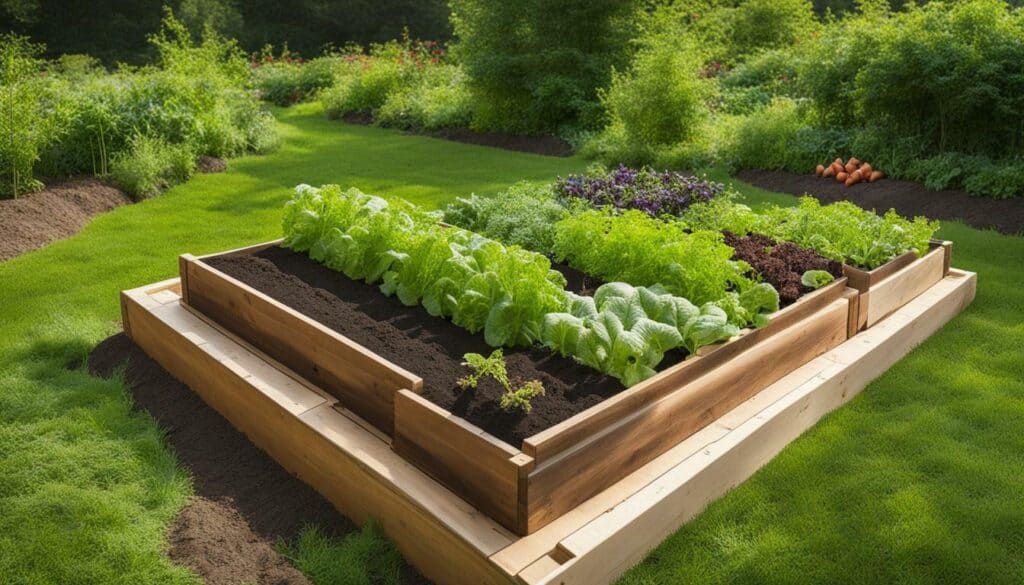
Choosing the Right Vegetable Garden for Urban Gardening
For those living in urban areas, raised bed gardening is often the most practical option. Raised beds can be placed on a balcony, rooftop, or any other small outdoor space. They are also great for those looking to minimize bending and kneeling while gardening, as they can be built at a comfortable height.
When choosing a raised bed, it’s important to consider the materials used to construct it. Cedar or redwood are recommended, as they are rot-resistant and won’t leach chemicals into the soil. It’s also important to choose a size that fits your space and needs. A 4′ x 4′ raised bed can fit on most balconies, while a 4′ x 8′ raised bed can provide enough space to grow a variety of vegetables and herbs.
When selecting plants for an urban raised bed garden, it’s important to choose varieties that are well-suited for container gardening. This can include cherry tomatoes, lettuce, peppers, and herbs such as basil and parsley. Vertical gardening is also a great option for those with limited space, as it allows you to grow plants up a trellis or wall rather than outwards in a traditional garden bed.
Growing Vegetables: Tips for Beginners
Start small if you’re a beginner, and only grow vegetables that you and your family will eat. Some easy vegetables for beginners include lettuce, green beans, radishes, tomatoes, zucchini, and peppers. Pick a spot that receives ample sunlight, has well-drained soil, and is protected from strong winds. Adding organic matter, such as compost, to your soil can provide essential nutrients for healthy plant growth.
Caring for your plants throughout the growing season is important. Consider watering them regularly and using mulch to retain moisture. If you plan to go on vacation, arrange for someone to water your plants or install a drip irrigation system.
Planting vegetables at the right time is crucial. Some are cool-season veggies, while others are warm-season veggies. Research the best times to plant for your area and climate. Learning basic gardening terms can also be helpful. Knowing the difference between annuals and perennials, for example, can help you plan your garden for the long term.
If you’re unsure where to start, consider taking an online gardening course or consulting with a local nursery. They can provide valuable guidance on everything from choosing the right tools to selecting the best fertilizer.
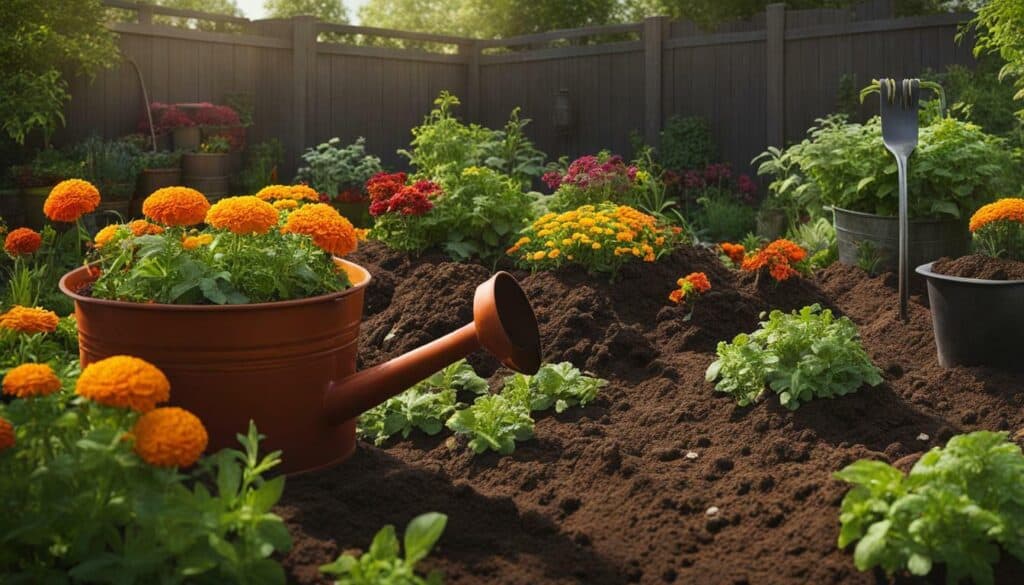
Gardening is a learning process, and mistakes will happen. Don’t get discouraged if your first crop doesn’t turn out as planned. Use it as an opportunity to learn and improve for next time.
Planting Vegetables at the Right Time
Planting vegetables at the right time is crucial for a successful garden. The first step is to pick the right location, ensuring it receives at least 6 to 8 hours of direct sunlight per day and has well-drained soil. It’s important to choose a plot size that is manageable, whether it’s a 10′ x 10′ garden in the ground or a 4′ x 4′ raised bed.
Consider the availability of vegetables at your local grocery store and be realistic about how much your family will consume. This will help determine the types of vegetables you should plant. You should also choose vegetables that are easy to grow and that you and your family enjoy eating.
Taking care of your plants throughout the growing season is essential, so plan accordingly if you’ll be away during the summer months. Make sure you have the right gardening tools, such as a watering can and trowel, and familiarize yourself with organic gardening practices.
Lastly, it’s important to understand that different vegetables have different planting times. Cool-season vegetables like lettuce and broccoli should be planted in the early spring, while warm-season vegetables like tomatoes and cucumbers should be planted in late spring or summer. By following these guidelines, you’ll be on your way to a successful vegetable garden.

I always make a list of the vegetables I want to plant, then research the best planting times for each one,” said gardening expert Jane Smith. “It helps me stay organized and ensures that I plant each vegetable at the right time.”
Dealing with Garden Pests and Diseases
Learn how to handle common garden pests, diseases, and other problems that can affect your plants. Effective pest and disease management is vital to maintaining a healthy garden. Pests such as aphids, spider mites, and whiteflies can cause damage to your plants, while diseases like powdery mildew and black spot can spread quickly and lead to plant death.
It is important to be proactive when it comes to pest and disease management. Start by selecting a suitable location for your garden that receives ample sunlight and has well-drained soil. Nutrient-rich soil is also essential for the health of your plants. When choosing vegetables to grow, consider your family’s preferences and the availability of certain vegetables in your area. Overplanting can be overwhelming, so it is important to be realistic about how much you can care for.
Throughout the growing season, provide adequate water and protection from pests. For example, you can use row covers to prevent pests from accessing your plants, and insecticidal soap or neem oil to control pests. Weeds can also compete with your plants for nutrients, so it is important to keep your garden weed-free.
To address common garden pests, diseases, and weeds, learn about natural and safe methods of control. For example, companion planting can help repel pests, while crop rotation can prevent diseases from recurring in your garden. Additionally, know the different types of plants, gardening terms, and online courses available to enhance your gardening knowledge and success.
Organic gardening is another effective way to manage pests and diseases. By using natural methods such as composting, crop rotation, and biological control, you can maintain a healthy and thriving garden without the use of harmful chemicals. Gardening tips such as these can ensure your garden remains healthy and fruitful for years to come.
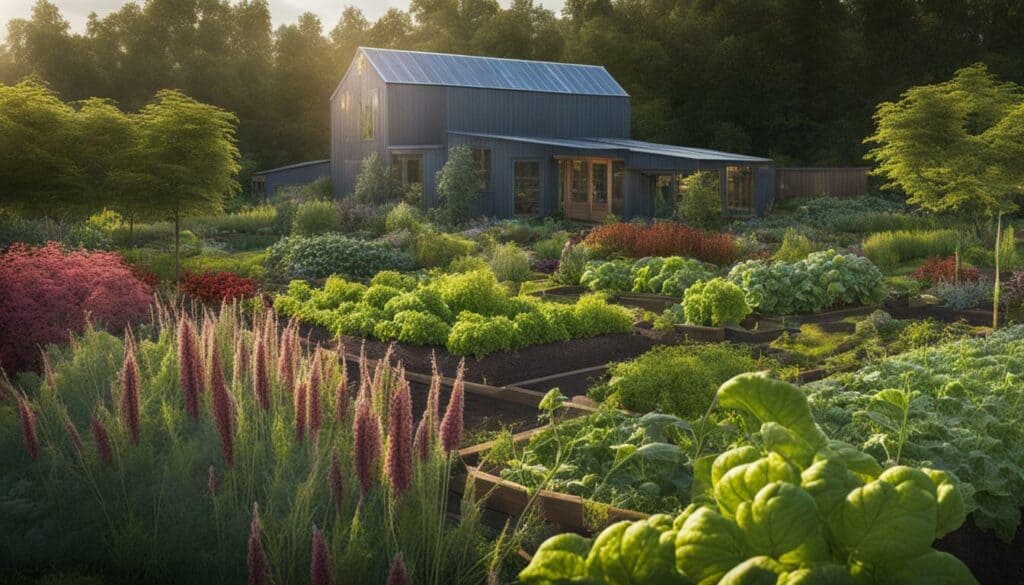
Remember to always read product labels carefully and follow instructions for use. Be mindful of potential risks and hazards associated with any pest control method and take necessary precautions to protect yourself and your garden.
Exploring Different Types of Plants
Explore different types of plants, such as annuals, perennials, shrubs, and bulbs, and understand their growing requirements. When selecting plants, consider the amount of sunlight, water, and soil nutrients needed for them to thrive. Most plants require 6 to 8 hours of direct sunlight per day and well-draining, nutrient-rich soil.
Starting small with a few favorite vegetables or flowers is recommended, especially for beginners. Some easy vegetables for beginners to grow include lettuce, green beans, radishes, and tomatoes. Timing is important when planting vegetables, as different vegetables have different requirements. For indoor gardening, options are available to keep your gardening going even during winter.
Understanding common gardening terms such as annual, perennial, deciduous, and evergreen can also be helpful in selecting the right plants. Annual plants live for one growing season and then die, while perennials come back year after year. Deciduous plants shed their leaves in the fall, and evergreen plants keep their leaves year-round.
Exploring different types of plants can be an enjoyable and rewarding experience. It allows you to create a garden that suits your preferences and brings beauty and nourishment to your surroundings.

“The love of gardening is a seed once sown that never dies.” – Gertrude Jekyll
Growing Your Own Food: Vegetables and Herbs
If you’re interested in growing your own food, learn how to grow vegetables and herbs. Not only is it a fun and rewarding hobby, but it can also provide you with fresh and delicious produce.
The first step in starting a vegetable garden is selecting the right location. Look for a spot that receives 6 to 8 hours of direct sunlight per day and has well-draining soil. It’s also important to start small and choose vegetables that you and your family enjoy eating. Some easy vegetables for beginners include lettuce, green beans, radishes, tomatoes, zucchini, peppers, beets, carrots, chard, spinach, kale, and peas.
Take care of your plants throughout the growing season and use high-quality seeds. When planning your garden, consider the specific needs of each vegetable, such as the best time to plant and the arrangement of the plants.
It’s also important to learn about common garden pests, diseases, and other problems, and how to deal with them naturally. Organic gardening practices can help keep your garden healthy and productive.
Herbs are another great addition to any garden. They’re easy to grow and can add flavor to your meals. Some popular herbs to grow include basil, thyme, rosemary, parsley, and cilantro.
Creating a successful vegetable and herb garden takes some effort, but the rewards are worth it. You’ll have fresh and healthy produce, and the satisfaction of growing it yourself.

Remember, gardening is a learning experience, and there are many resources available to guide you. By understanding common gardening terms and choosing the right plants for your garden, you can create a thriving and beautiful outdoor space that provides you with fresh and tasty produce.
Starting a Flower Garden
Starting a flower garden can be a daunting task, but it is a rewarding hobby that allows you to enjoy the beauty of fresh flowers. You can also start a flower garden by planning your garden and choosing easy-to-grow flowers.
To start, you need to pick the right location for your garden. Most flowers require 6 to 8 hours of direct sunlight per day, so find a sunny spot. Additionally, make sure the soil drains well and doesn’t stay wet, as wet roots can lead to rot. It is also important to choose a stable and not windy location to avoid damage to your plants.
When it comes to the size of the garden, it’s better to start small and grow what you know you and your family will eat. A 10′ x 10′ garden is a good size for beginners, but you can also start with a raised bed that is 4′ x 4′ or 4′ x 8′. If you want to go bigger, a 12′ x 24′ garden can feed a family of four. Make sure to have paths in your garden for easy access to your plants.
In terms of choosing flowers, start with easy-to-grow varieties that you love. Some suggestions include marigolds, which discourage pests and attract pollinators, as well as add color to your garden. It’s important to choose flowers that thrive in your climate, so consider contacting your local Cooperative Extension Service for advice.
When it comes to planting, not all flowers are planted at the same time. “Cool-season” flowers like lettuce and broccoli are planted in early spring, while “warm-season” flowers like tomatoes and peppers are planted in late spring and summer. Consider the height of the flowers and plant tall ones on the north side of the garden to avoid shading shorter plants.
If you want to garden indoors, you can grow plants indoors during the winter months. Follow proper care and placement techniques to keep your houseplants happy.
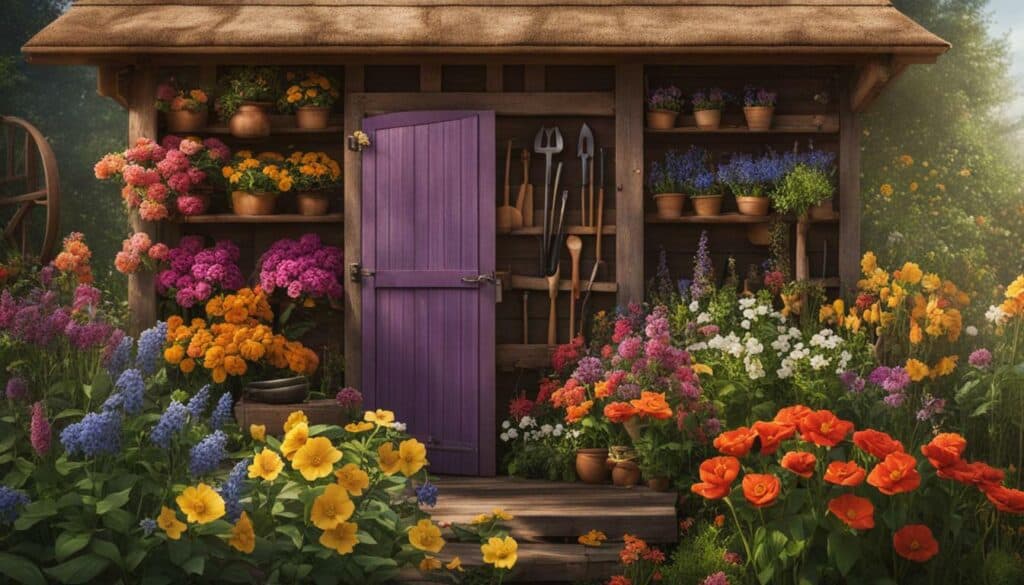
Starting a flower garden can be a fun and creative project that allows you to express your love for gardening. By following these tips, you can create a beautiful garden and enjoy the colorful blooms.
Indoor Gardening: Growing Plants Indoors
Gardening doesn’t have to stop during winter; you can grow plants indoors. Indoor gardening is a popular and rewarding hobby that allows you to grow plants inside your home. To start, it is important to choose a sunny spot that receives 6 to 8 hours of direct sunlight per day. Make sure the soil drains well and isn’t overly wet, as wet roots can lead to root rot. It is also important to select a stable location that is not prone to strong winds or flooding.
Nutrient-rich soil is essential, so consider mixing in organic matter to help your plants grow. When it comes to the size of your garden, it’s better to start small and only grow what you know you and your family will eat. For beginners, a 10′ x 10′ garden in the ground or a 4′ x 4′ raised bed is manageable. Also, consider choosing easy vegetables like lettuce, green beans, radishes, tomatoes, and zucchini to start with. These can be planted directly into the soil.
Keep in mind that not all vegetables are planted at the same time, as some are cool-season vegetables while others are warm-season vegetables. You can also grow flowers like marigolds that discourage pests and attract pollinators. Additionally, there are resources available to help you deal with common garden pests, diseases, and other problems that may arise.
If you are interested in growing plants indoors during the winter, it is possible with proper care and placement. Make sure to choose plants that are well-suited to indoor growing conditions, such as herbs or leafy greens. Remember to provide sufficient light, as most indoor environments do not receive as much sunlight as outdoor gardens. You can use grow lights or fluorescent bulbs to supplement natural light. Watering is also important. Be careful not to overwater your plants, as this can lead to root rot. Instead, water them when the top inch of soil feels dry to the touch.
Finally, consider exploring online courses to further enhance your gardening knowledge. Indoor gardening allows you to enjoy fresh and flavorful produce year-round, so give it a try and watch your plants thrive.
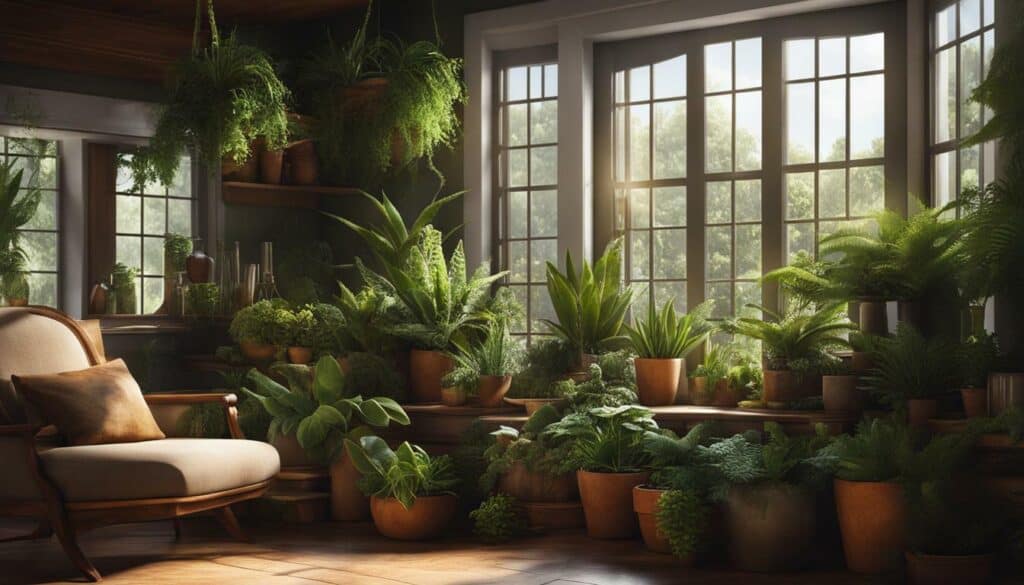
Garden-Inspired DIY Projects
Additionally, get inspiration for garden-inspired DIY projects using items from your garden. Gardening is not just about planting and harvesting crops; it is also about creativity and imagination. There are many innovative ways to incorporate your love for gardening into unique and beautiful projects.
One simple project that you can do is to create flower arrangements using flowers from your garden. You can use a variety of containers such as mason jars or vintage pitchers to display your flowers. Another way to use flowers is to press them and create personalized stationery or gift tags.
If you have branches or twigs in your garden, you can create a natural wreath or garland. You can also use them to make unique and rustic picture frames.
Repurposing items is another great way to create garden-inspired crafts. You can use old pallets to create a vertical garden or a raised bed. You can also turn old tires into colorful planters.
Learning how to grow your own vegetables and herbs is not only a sustainable way to get fresh produce, but it can also be a fun and rewarding DIY project. You can start small with a container garden or go big with a full vegetable plot.
Lastly, starting a flower garden is a beautiful and rewarding experience. You can create a garden that is filled with your favorite flowers and colors. You can also attract pollinators such as bees and butterflies to your garden.
There are many resources available online that provide step-by-step instructions and ideas for DIY projects. You can also join gardening communities and forums to get inspiration from fellow gardeners.
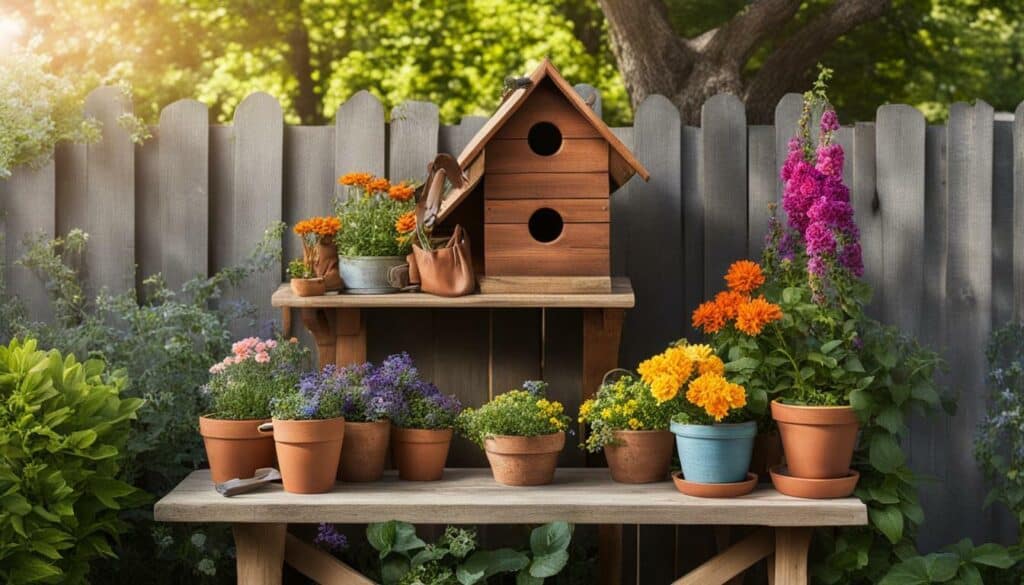
So, get creative and have fun with your gardening projects. The possibilities are endless!
Conclusion
Familiarize yourself with common gardening terms to better understand plant types, sun and shade requirements, and plant habits. Starting a garden can seem overwhelming, but with the right knowledge and approach, it can be a fulfilling and rewarding hobby. As a beginner, it is important to choose the right location and size for your vegetable garden and to carefully select the types of vegetables and herbs to grow. Remember to start small and only grow produce you know you and your family will eat.
Throughout the growing season, taking care of plants and using high-quality seeds are essential for a thriving garden. Additionally, arranging plants based on their specific requirements will ensure each plant gets the necessary light, water, and nutrients it needs. Whether you are interested in growing vegetables, herbs, or flowers, gardening can be an enjoyable way to connect with nature and enjoy the beauty and flavors of homegrown produce.
Urban gardening can be especially rewarding, as it allows city dwellers to connect with nature and grow their own food in limited space. With some creativity and resourcefulness, an urban garden can flourish in a small backyard, balcony, or even on a windowsill. Remember to research the specific needs of your chosen plants and to adjust your approach as needed to ensure a successful harvest.
Gardening Tips for Beginners
As a beginner gardener, it can be helpful to start with easy-to-grow plants like lettuce, radishes, and cherry tomatoes. These vegetables are relatively low-maintenance and can provide a satisfying harvest even for novice gardeners. Additionally, incorporating organic gardening practices can help promote healthy soil and plant growth while minimizing the use of harmful chemicals.
Investing in high-quality gardening tools and equipment can also make a big difference in your gardening experience. Choosing the right gloves, hand trowels, and watering cans can help make gardening more comfortable and efficient. Keeping a gardening journal can also be helpful for tracking plant growth and identifying successful strategies.
Whether you are a novice or experienced gardener, incorporating gardening into your routine can provide numerous physical, mental, and emotional benefits. From growing your own produce to connecting with nature, gardening offers a world of possibilities for those willing to get their hands dirty.
What Are the Indicators of the Ideal Time to Start a Garden?
The ideal time to start a garden varies depending on several indicators. One key factor is the climate of the region, as different plants have specific temperature requirements. Another consideration is the type of garden you want to create, whether it’s annual flowers or perennial vegetables. Additionally, soil preparation and maintenance play a crucial role. Proper planning and research will help you determine the ideal time to start a garden for a successful and fruitful endeavor.
What Are Some Beginner’s Tips for Starting a Garden?
Starting a garden may seem overwhelming, but with the right beginner’s tips for starting a garden, anyone can experience the joy of growing their own plants. Begin by selecting easy-to-grow plants, preparing the soil properly, and providing adequate sunlight and water. Embrace patience, as gardening is a learning process that rewards dedication and care.
FAQ
Q: What vegetables are easy for beginners to grow?
A: Some easy vegetables for beginners include lettuce, green beans, radishes, tomatoes, zucchini, peppers, beets, carrots, chard, spinach, kale, and peas.
Q: When should I plant vegetables in my garden?
A: Plant vegetables at the appropriate time based on whether they are cool-season or warm-season crops.
Q: How do I handle pests and diseases in my garden?
A: Learn how to handle common garden pests, diseases, and other problems that can affect your plants.
Q: What are some different types of plants I can grow?
A: Explore different types of plants, such as annuals, perennials, shrubs, and bulbs, and understand their growing requirements.
Q: Can I grow my own vegetables and herbs?
A: If you’re interested in growing your own food, learn how to grow vegetables and herbs.
Q: How do I start a flower garden?
A: You can also start a flower garden by planning your garden and choosing easy-to-grow flowers.
Q: Can I continue gardening indoors during winter?
A: Gardening doesn’t have to stop during winter; you can grow plants indoors.
Q: What kind of DIY projects can I do with items from my garden?
A: Get inspiration for garden-inspired DIY projects using items from your garden.
Q: Where can I learn more about gardening?
A: Consider taking online courses to enhance your gardening knowledge.
Source Links
- https://www.almanac.com/vegetable-gardening-for-beginners
- https://www.gardendesign.com/how-to/
- https://www.amazon.com/How-Start-Gardening-Guide-Beginners/dp/1480123803
- https://www.almanac.com/where-put-vegetable-garden
- https://www.groundsguys.com/blog/2021/april/how-to-choose-the-best-location-for-a-vegetable-/
- https://youshouldgrow.com/vegetable-gardening-tips-for-beginners/
- https://graceinmyspace.com/vegetable-gardening-for-beginners/
- https://www.bhg.com/gardening/vegetable/vegetables/when-to-plant-vegetables/
- https://www.realsimple.com/home-organizing/gardening/outdoor/month-by-month-vegetable-gardening-guide
- https://www.homesandgardens.com/gardens/when-to-plant-vegetables
- https://www.gardeners.com/how-to/managing-garden-pests-diseases/5064.html
- https://kidsgardening.org/resources/gardening-basics-dealing-with-garden-pests-and-diseases/
- https://www.tenthacrefarm.com/preventing-garden-pests/
- https://mybrightwheel.com/blog/garden-and-plant-activities
- https://www.weareteachers.com/plant-life-cycle-activities/
- https://gardens.duke.edu/sites/default/files/What_do_plants_need-2.pdf
- https://foodprint.org/growing-your-own-food/
- https://www.attainable-sustainable.net/grow-your-own-food/
- https://www.treehugger.com/growing-your-own-food-5324249
- https://www.gardeningknowhow.com/special/starting/how-to-start-your-flower-garden.htm
- https://www.marthastewart.com/8248515/how-start-flower-garden
- https://www.gardendesign.com/how-to/start-a-flower-garden.html
- https://growagoodlife.com/indoor-garden/
- https://www.thespruce.com/indoor-gardening-beginner-guide-5199347
- https://www.planetnatural.com/growing-indoors/
- https://www.diyncrafts.com/36372/home/40-easy-one-day-diy-lawn-garden-projects-youll-want-try-today
- https://www.thespruce.com/diy-garden-ideas-7187536
- https://www.thesprucecrafts.com/diy-garden-projects-4126789
- https://www.daleharvey.com/in-the-garden/articles-of-interest/PACIFIC STEEL SUTTON PARK/Sutton Park Primary School Gardening Project/Page 5 – Conclusion.html
- https://www.betterhealth.vic.gov.au/health/healthyliving/gardens-for-all-a-health-activity
- https://www.betterhealth.vic.gov.au/health/healthyliving/gardening-for-children

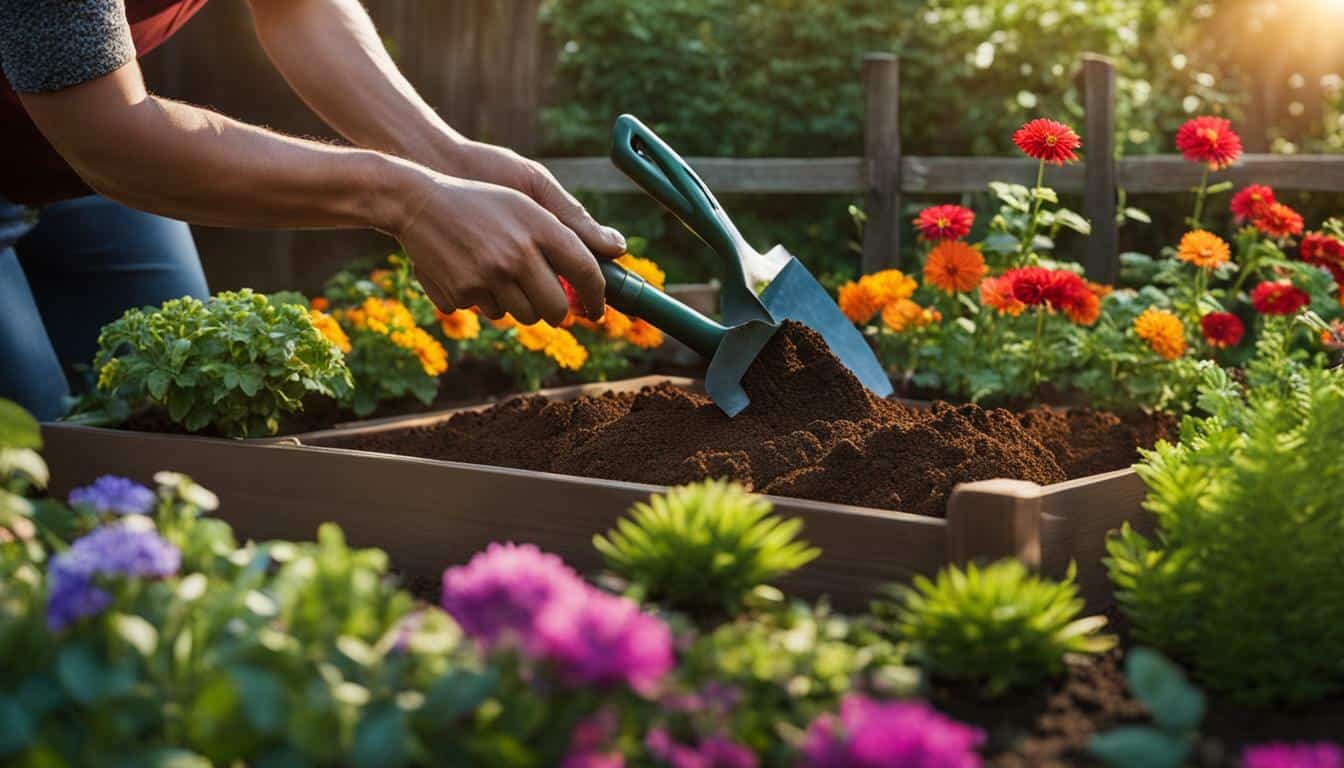



Leave a Reply